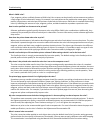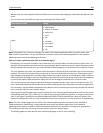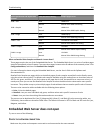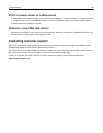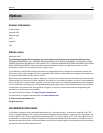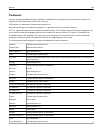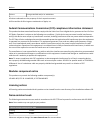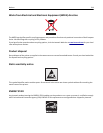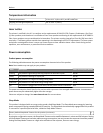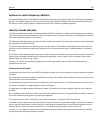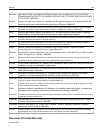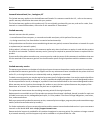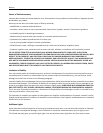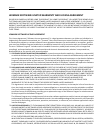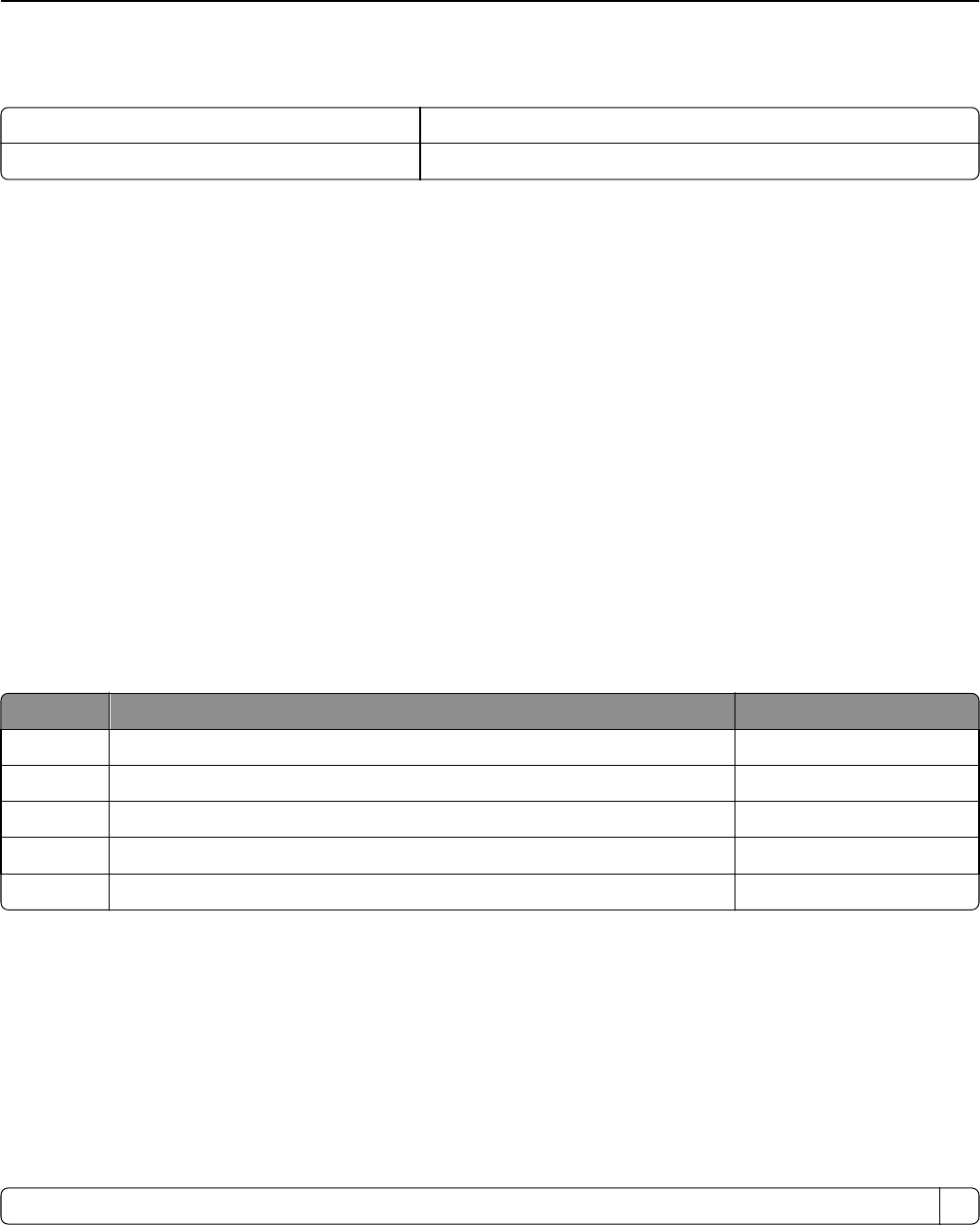
Temperature information
Ambient temperature 15.6 to 32.2° C (60 to 90° F) and 8% to 80% RH
Shipping and storage temperature ‑40° to 43.3° C (110° F)
Laser notice
The printer is certified in the U.S. to conform to the requirements of DHHS 21 CFR, Chapter I, Subchapter J for Class I
(1) laser products, and elsewhere is certified as a Class I laser product conforming to the requirements of IEC 60825-1.
Class I laser products are not considered to be hazardous. The printer contains internally a Class IIIb (3b) laser that is
nominally a 7 milliwatt gallium arsenide laser operating in the wavelength of 655-675 nanometers. The laser system
and printer are designed so there is never any human access to laser radiation above a Class I level during normal
operation, user maintenance, or prescribed service condition.
Power consumption
Product power consumption
The following table documents the power consumption characteristics of the product.
Note: Some modes may not apply to your product.
Mode Description Power consumption (Watts)
Printing The product is generating hard‑copy output from electronic inputs. 600 W
Ready The product is waiting for a print job. 105 W
Sleep Mode The product is in a high‑level energy‑saving mode. 12 W
Hibernate The product is in a low‑level energy‑saving mode. 4.2 W
Off The product is plugged into a wall outlet, but the power switch is turned off. 0 W
The power consumption levels listed in the previous table represent time-averaged measurements. Instantaneous
power draws may be substantially higher than the average.
Values are subject to change. See www.lexmark.com for current values.
Sleep Mode
This product is designed with an energy-saving mode called Sleep Mode. The Sleep Mode saves energy by lowering
power consumption during extended periods of inactivity. The Sleep Mode is automatically engaged after this product
is not used for a specified period of time, called the Sleep Mode Timeout.
Factory default Sleep Mode Timeout for this product (in minutes): 5
By using the configuration menus, the Sleep Mode Timeout can be modified between 1 minute and 240 minutes. Setting
the Sleep Mode Timeout to a low value reduces energy consumption, but may increase the response time of the product.
Setting the Sleep Mode Timeout to a high value maintains a fast response, but uses more energy.
Notices 215



